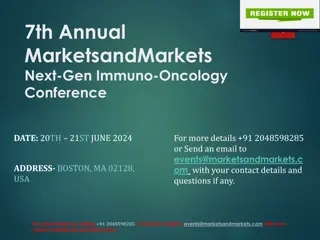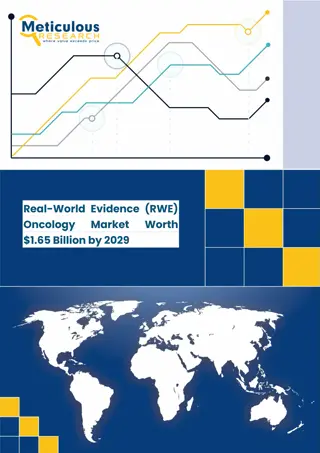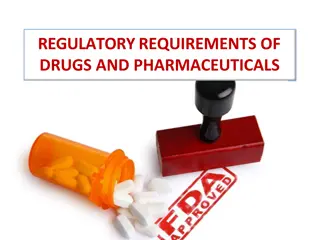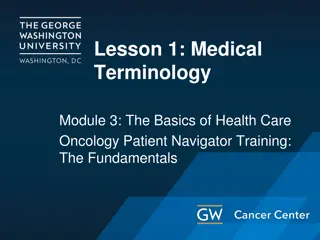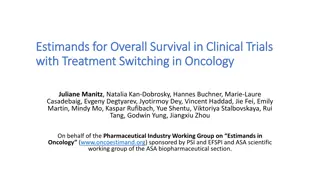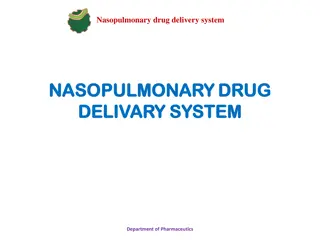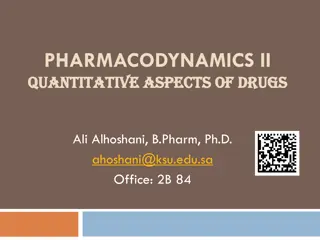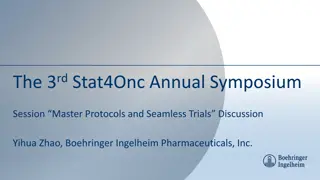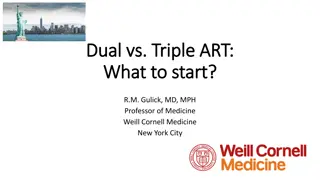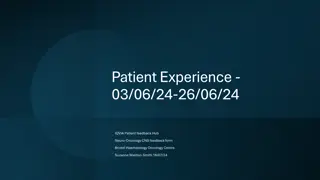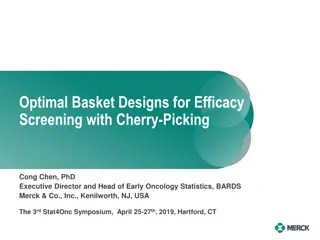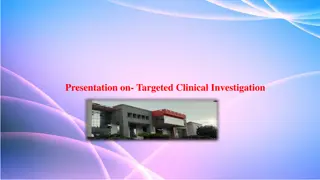Evolution of Oncology Drug Development Strategies
Explore the shifting trends in oncology drug development, from understanding cancer mechanisms to new immuno-oncology approaches. Delve into the role of statisticians in researching cancer drugs and uncover the importance of early-phase trials in validating treatment mechanisms. Discover the need for precision medicine and the evolving evidence requirements for drug approval in oncology.
Download Presentation

Please find below an Image/Link to download the presentation.
The content on the website is provided AS IS for your information and personal use only. It may not be sold, licensed, or shared on other websites without obtaining consent from the author.If you encounter any issues during the download, it is possible that the publisher has removed the file from their server.
You are allowed to download the files provided on this website for personal or commercial use, subject to the condition that they are used lawfully. All files are the property of their respective owners.
The content on the website is provided AS IS for your information and personal use only. It may not be sold, licensed, or shared on other websites without obtaining consent from the author.
E N D
Presentation Transcript
Stat4Onco Annual Symposium Zhenming Shun April 27, 2019
Dr. Markus P. Vallaster The times they are a-changin new immuno-oncology approaches to old cancers |2
My comment Very Educational! |3
A Question As a statistician working in oncology drug research and development, do you need to understand Mechanism of cancers? Mechanism of the drug? |4
Cancer is a collection of related diseases ----- from The Emperor of All Maladies: A Biography of Cancer by Siddhartha Mukherjee |5
An Example Non-Small Cell Lung Cancers (NSCLC) |6
Todays Oncology Drug Development |10
Focusing on early development Old Way for Chemo Therapies In the past: Phase III Small extension /PoC study MTD with 3+3 design By then we believed: A higher dose was better |11
Focusing on early development Today Multiple Objectives in early development: PoC Biomarker Dose How large a phase 1/2 trial can be? |12
New Trends in Oncology More Precise and Small Scale What evidence we need for drug approval PoC BM Dose Small Pivotal Study Early Phase: Validate MoA of Treatment Pre- Clinical RWE Note: Possible exceptions for studies with strong active controls. Total Evidence |13
The Answer Yes, you have to know. |14
Dr. Cong Chen Optimal Basket Designs for Efficacy Screening with Cherry- Picking |15
For the purpose of discussion only, I am going to use some terminologies in a non-scientific, imprecise way |16
About Basket Trials (1) First Question: Operational or Scientific? Operational: Target on Similar tumor types A few independent phase II studies under one master protocol Scientific: Target on Similar tumor types Use data pooled across tumor types (sub studies) to provide evidence of drug activities |17
About Basket Trials (2) Second Question: Screening or Tumor-specific? Screening: Select a set of tumor types from the study where treatment has minimal acceptable activities Less statistical rigor Disease-specific: Target on a specific cancer disease with gene signature- defined multiple tumor types What is a tumor type (later slides)? How to evaluate and handle heterogeneity among tumor types ? |18
What Is a Tumor Type? Is the traditional histology classification still meaningful for defining cancer diseases? Or location is just one of many prognostic factors of cancer? Should a criterion based on specific biomarker(s) expression or cell signature be used in tumor type definition regardless of histology? E.g. Pembrolizumab: Unresectable or metastatic solid tumors with expression of MSI-H or dMMR |19
Heterogeneity Heterogeneity is always a challenge regardless of the classification of the tumor diseases Histology definition: See NSCLC as example Biomarker expression: How many drugs approved based on a biomarker expression? Is heterogeneity a biological or statistical definition? Regulatory: Is strong heterogeneity among tumor types acceptable if the targeted indication is based on a specific biomarker expression? Statistician: Do we really care about the issue if we can prove drug activities in a subset of tumors based on a predictive biomarker ? |20
Heterogeneity vs Pooling However, we do need justification for pooling data from different tumors Why we are pooling: Detect a signal of the activity across a set of similar tumors Strengthen the signal using correlated information from related tumors Prepare for the pivotal study Why we can pool? Biologically meaningful? Statistically meaningful? |21
Thank You |22





